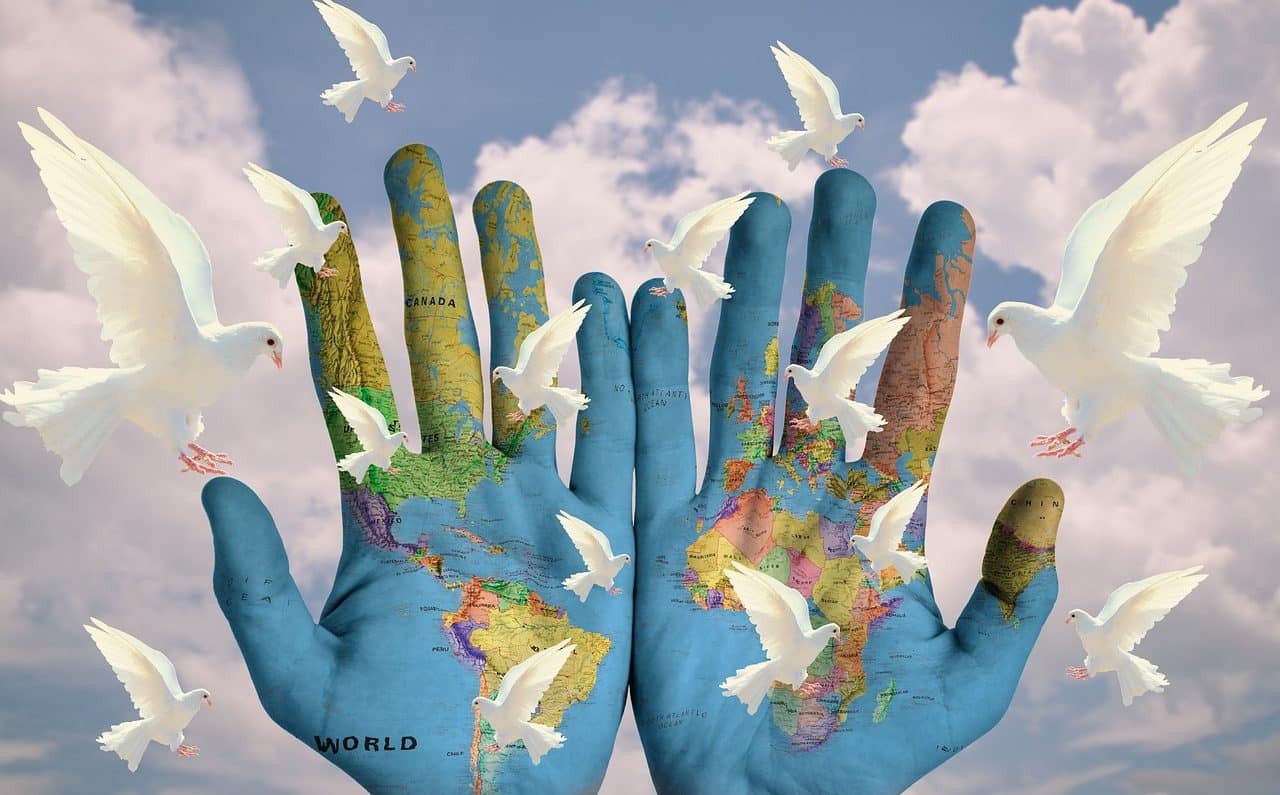
Diplomacy and international cooperation are key to world peace.
Peace is a concept originating from the Latin term pax that can be defined in a positive sense and in a negative sense. In a positive sense, peace is a state of tranquility and stillness ; On the other hand, in a negative sense, peace is the absence of war or violence .
At the political level and for international law , peace is the situation and mutual relationship of those who are not at war. In these cases, it is about social peace , where good relations are maintained between communities of individuals.
Types of peace
Throughout history , social peace was not always considered a good thing. Some peoples, such as the Vikings , based their development on the plundering of neighboring communities, which is why they exalted warriors and their virtues.
Peace can also refer to the treaty or agreement established between rulers to reach a truce and end a war conflict. On the other hand, we can say that Pax Romana (Roman peace) is a concept that refers to a government that exercises unilateral power, without controls and without respect for the rights of citizens.

To guarantee peace, peace movements and non-governmental organizations promote non-aggression, demilitarization and mutual respect.
The concept at the individual level and in religion
When peace refers to the individual level, it generally refers to an internal state devoid of negative feelings such as hatred or anger. A subject with inner peace is one who is calm with himself and, therefore, with others.
For religion , peace is also a greeting , since it is a value that one desires for oneself and one's neighbor . That is why expressions such as "peace be with you" are used and, in some masses, it includes a kiss on the face of the person next to you.

The symbol of peace is recognized throughout the world.
Examples of peace
Suppose that, in a certain nation, there are two ethnic groups . For several decades, both communities maintained violent confrontations, which caused thousands of deaths. Following the intervention of international envoys, negotiations began that led to reconciliation and the signing of a peace treaty . Since then, both populations have coexisted in harmony. With the agreement and the ceasefire, therefore, a coexistence of these groups based on non-violence began.
Take the case of a city plagued by crime . This situation affects the well-being of the inhabitants, political stability and even human development. To reverse this reality, the authorities are strengthening crime prevention and repression tasks and promoting a disarmament plan. Thus, little by little, peace is recovered.
Let's now think about an individual who, after suffering family losses, went through a period marked by depression and addictions. Thanks to the assistance of a therapist and resorting to relaxation and meditation techniques, over time he was able to regain serenity and hope, achieving spiritual peace again.
A Mexican movement
In some countries where social and political conflicts are severe and have led to the territory being constantly affected by war and violence, movements are born that advocate for peace and try to end this state of violence and insecurity . Such is the case of the Movement for Peace with Justice and Dignity, which originated in 2011 in Mexico .
Due to certain decisions made by the Mexican government, in its fight against drug trafficking, many reprisals have been generated that have led to a state of such uncertainty in society that it has been necessary for civil society to rise up with a slogan that reads " Die Better ." » and which consists of a satire of the one proposed by the State in that fight against the drug market.
This movement was born in April 2011 and was promoted by the poet Javier Sicilia , who, after suffering the death of his son (murdered by individuals who were part of organized crime) brought together all Mexicans to demonstrate against the violence, both from criminal groups and that carried out by the security forces that depended on the Mexican State.
Many organizations that fight for the achievement of human rights in Mexican territory and outside it, joined this movement and said membership concluded with the signing of a national pact against insecurity , signed on June 10 of that year in Ciudad Juárez. . Little by little they came closer to the voice of all the residents, getting the State itself to agree to openly discuss the strategy against organized crime and on June 23, 2011, the Dialogue for Peace was held in Chapultepec Castle.
In this meeting, the State was demanded to clarify murders and disappearances , to end this strategy based on violence and to take new measures to combat corruption and impunity and rebuild the damaged social fabric . Despite this, these demands have not been fully met and the fight continues between military groups that depend on the State and people belonging to organized crime and delinquency.
